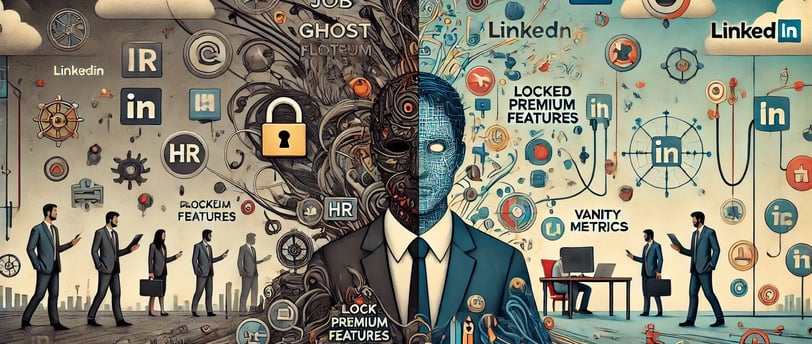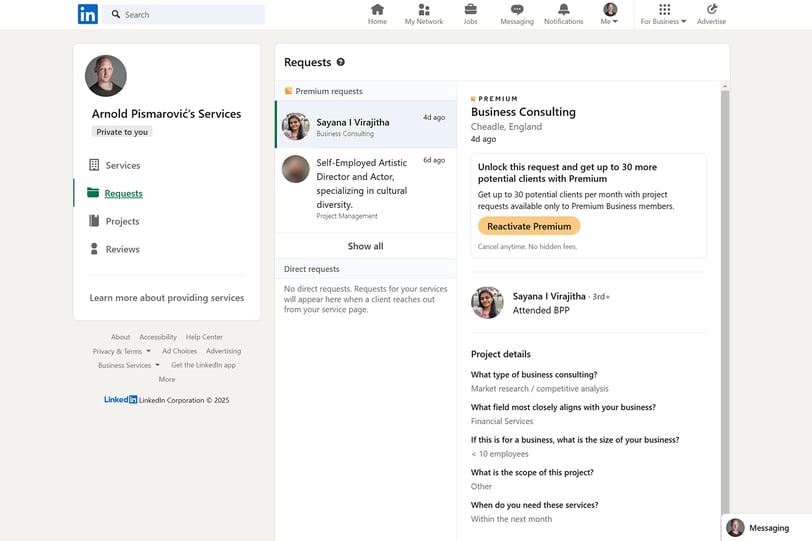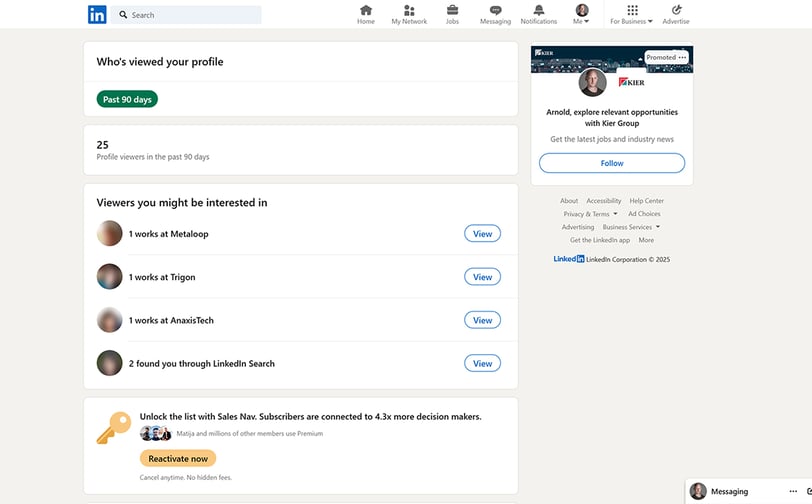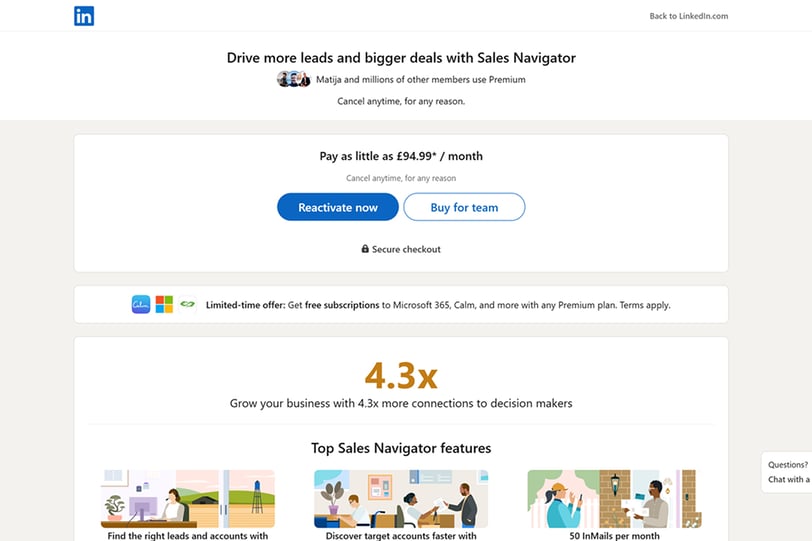Linkedin tale of success
When you become the problem you wanted to solve with your company.
DESIGNBUSINESSMANAGEMENTHIRINGFEEDBACKWORKFLOWREMOTE WORKSALESWORK CULTURE


Context
LinkedIn had great goals as a company. Make networking easier in an online environment. They succeeded at first. They slowly conquered the job board market. If you check the stats they state that LinkedIn has around 24% of the global job board market. That is a big piece of the pie!
At some point, LinkedIn was seen as a must with a CV. You were seen as not professional enough if you did not have a LinkedIn set up.
People would utilize the ease of contacting one another and companies would benefit.
This was probably when they jumped the hype train, they felt secure, and well as such a big company they can do what they want.
As a professional social media platform, they jumped head first into the pronouns hype. This is irrelevant in the business world. A busy CEO will not care if your pronouns are f*cks/given, only that you can get the job done.
If you identify as a trisexual dragon martian fly - that is your business. A company does not benefit from your sexual orientation. The company does not care.
Somewhere along these lines, it's where people stopped mattering. Their experience, their hard work, and their situations all became less relevant. The jobs were less about the jobs and more about office politics.
Educating your customers
If you have such a large sum of people on your network (1.15 billion - 2025) you should dictate the terms to companies. All I see is that you can post a job ad within a minute. All you gotta do is pay.
So how should they educate the job posters? How should they help them without invalidating the job ads?
It's easy, they have data. So much data on jobs etc. They should talk with people working the jobs and companies. They should set a standard in job titles based on what you are doing not what the company thinks that title is.
Something like a UX developer should never get into the public eye. They should have a bot scouring the job ads with stupid titles and stupid requirements. They should take this as an opportunity to educate the customer and pitch even more services to them. Consulting or something similar.
Then you have the contents of the job ad. It's usually written by an HR person. It's usually so vague and disconnected from the job almost like HR with their responsibilities. A job description should contain a description of the job you are hiring for. I know it seems counterintuitive with the name being "job description" but trust me on this one. See part of a manager's job is to hire and you can read more on that here. HR was created for big corpos to handle a large amount of paperwork involving hiring, payments, etc. HR for smaller companies makes no sense. It's a person that usually has 0 work experience in the area you are hiring for and as such they do not have the basics needed to acquire talent.
They are not equipped with the tacit knowledge that you gain from working in an area. Sure they can ask the questions and judge you as a person, but will they know if you have what it takes to do a job? Probably not. That is why you now have companies full of people who can't do the work they were hired for. Nobody has clearly defined the work they are responsible for.
This is where LinkedIn with the massive DATA they have should intervene. They should make hiring easier for both customers. They should do it by educating and making their workflows include some standards. A blind homeless dog should not be able to write a job ad for any company. I am all for KISS (Keep It Simple Stupid) but you need to guide the users as well.
That is what LinkedIn should do to help fix the job market and improve the situation for everyone. They are doing god knows what. Let's see some of the things.


What is a "Business consulting request"?
"Premium requests are project requests that are available to you with a Business Premium subscription. Direct requests are project requests from members who have submitted a request directly through your service page. You will be notified when you receive a new project request. They will appear here when a client reaches out from your service page."
Based on those descriptions I would assume that people are trying to work with me. But upon further inspection - those requests are simply LinkedIn spamming 0 info and hoping I would pay a premium to contact those people.
It's like using an algorithm to find clients I might want to work with and they might need my services. For the past year, I have not seen ANY client that would need my services.
Value for me = 0, value for the other side = 0
Who benefits? I would love to talk to the person who thought this was a good idea. It's like they haven't seen it in action or used LinkedIn.


What is "Somebody viewed your profile"?
The mysterious viewer. Is it a stalker? Is it a potential employer? Is it a company looking for a consultant? Is it a networking potential? Is it Batman?
I guess we will never know. But if you decide to pay premium then and only then will you get to reveal the hidden people that viewed your profile. That information would be powerful if you could act on it. Since the most you could do is send them a message - there are simply no upsides to this.
I can guess how this went with the senior management. Somebody had a bright idea. "What if we teased a profile view, but protected it with a premium membership? People will want to be premium to see who has looked at their profiles, our users are vain."
So as a platform that started out with networking in mind, I went to a social media wall that has bots posting jobs and bots applying for those jobs. It's an attrition war of job posters vs job applicants, who will send more and prevail.
Adding to that mystery is who is viewing your profile. Almost like being back in high school and giggling about your crush when they pass.


Benefits of the premium Linkedin
"Pay as little as almost a hundred pounds."
As listed on LinkedIn
Premium Business members have 16x more connections on average.
Get more clients for your services
See Who's Viewed Your Profile over the last 365 days
Enhance your profile
Company insights
Open Profile
Top Applicant Job recommendations
22,000+ LinkedIn Learning courses
Job and applicant insights
Resume insights
Full access to Interview Preparation tools
Unlimited People Browsing
15 InMails per month
Now which ones provide value to a person seeking to connect with people and find new job opportunities?
Out of all those you do not get a catered list of jobs you could apply for - the top applicant job recommendations are as basic as it gets. It does not provide the value you would think as they recommend jobs usually that have been open for over 2-4 weeks.
The current market is that when a job is posted it has over a hundred applicants in hours. So benefits are nonexistent. It would be more beneficial for people to pay for Udemy, and learn new skills there than pay for Linkedin premium.


How does LinkedIn get back on track?
It seems simple because it is. Assess the market. Talk to companies, talk to job seekers.
Talk to your target market. Fix the matchmaking system and remove ghost jobs, ghosting recruiters, improve job postings.
Fix Job Postings and Matchmaking
Standardize job titles and descriptions using LinkedIn's data to ensure clarity and relevance.
Eliminate ghost jobs and hold recruiters accountable for timely responses to applicants.
Make Premium Features Valuable
Replace vanity metrics like “profile views” with actionable tools, such as outreach templates or better matchmaking for jobs and clients.
Focus on real-time job market insights and features that connect people meaningfully.
Refocus on Networking
Shift away from distractions like irrelevant features or divisive trends and double down on tools that genuinely help users build and maintain professional relationships.
Leverage Education
Use LinkedIn Learning to provide free or affordable resources that directly improve hiring practices, job-seeking skills, and professional growth.
Conclusion
LinkedIn was once a pioneer, but it has strayed into becoming just another corporate cash grab with features that don’t add real value. The solution is simple: listen to your users, leverage your unmatched data, and focus on solving the problems you set out to address in the first place. If LinkedIn can adapt, it has the potential to return to being the indispensable professional tool it once was—helping people connect, grow, and succeed.
